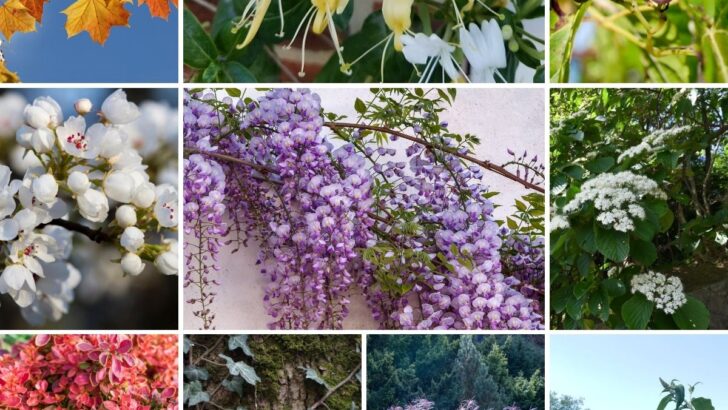While New Jersey has more than 2,000 beautiful native plant species, many of the plants you may be familiar seeing along roadsides, in the woods, and fields are actually invasive species. These aggressively spreading nonnative plants displace native plants and cause harm to local wildlife and entire ecosystems. Some invasive plants are still sold in nurseries, and you might even recognize some in your own garden. To help you begin distinguishing plant friend from foe, the following list includes some of the top invasive plants in New Jersey still commonly available for purchase.
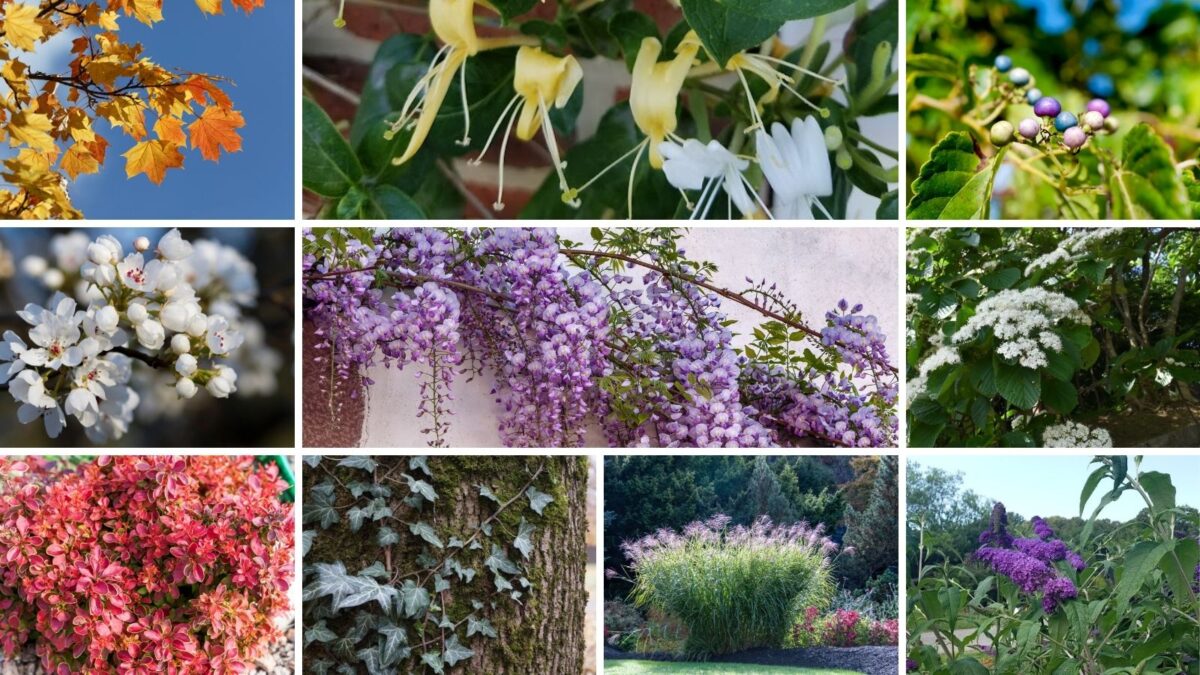
Invasive Plants in New Jersey
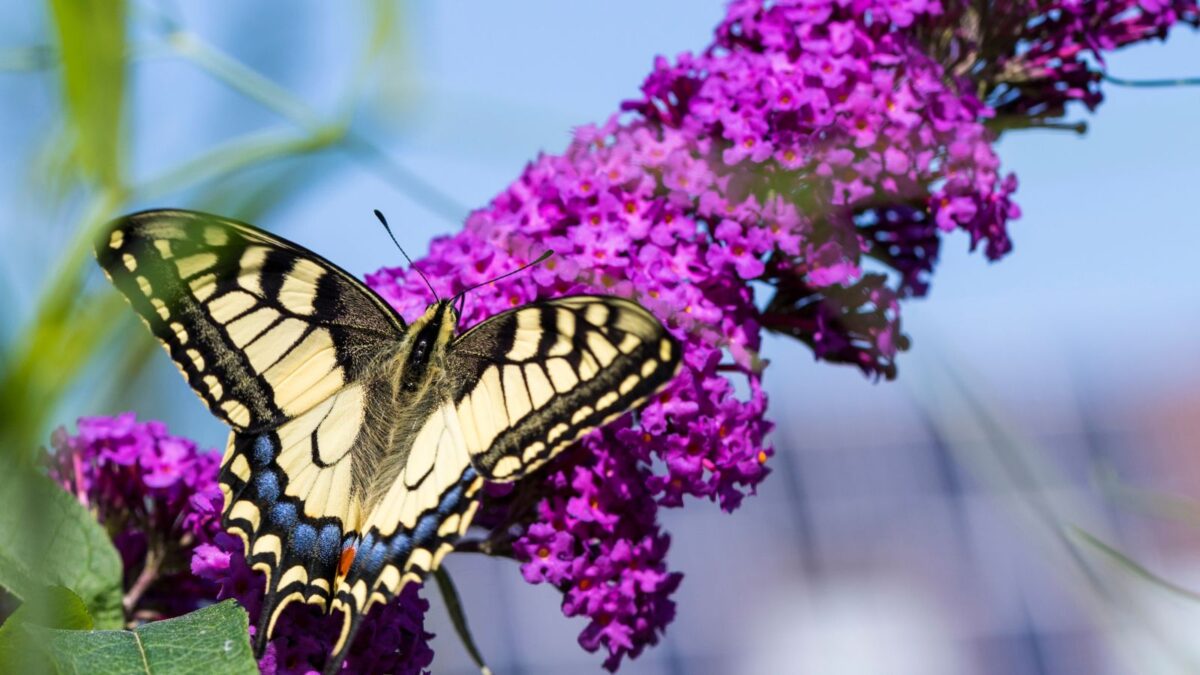
If you recognize some of the plants in this list as growing on your property, you can take action to remove the invasive species and replace it with a native alternative. To help you choose what to plant instead, the description of each plant in this list includes some suggestions. Always consult your local Extension office about the most effective control method for a specific plant before taking action to remove it. Some plants, for example, will spread more aggressively when cut, while others do not respond well to certain herbicide applications.
1. Butterfly bush (Buddleja davidii)
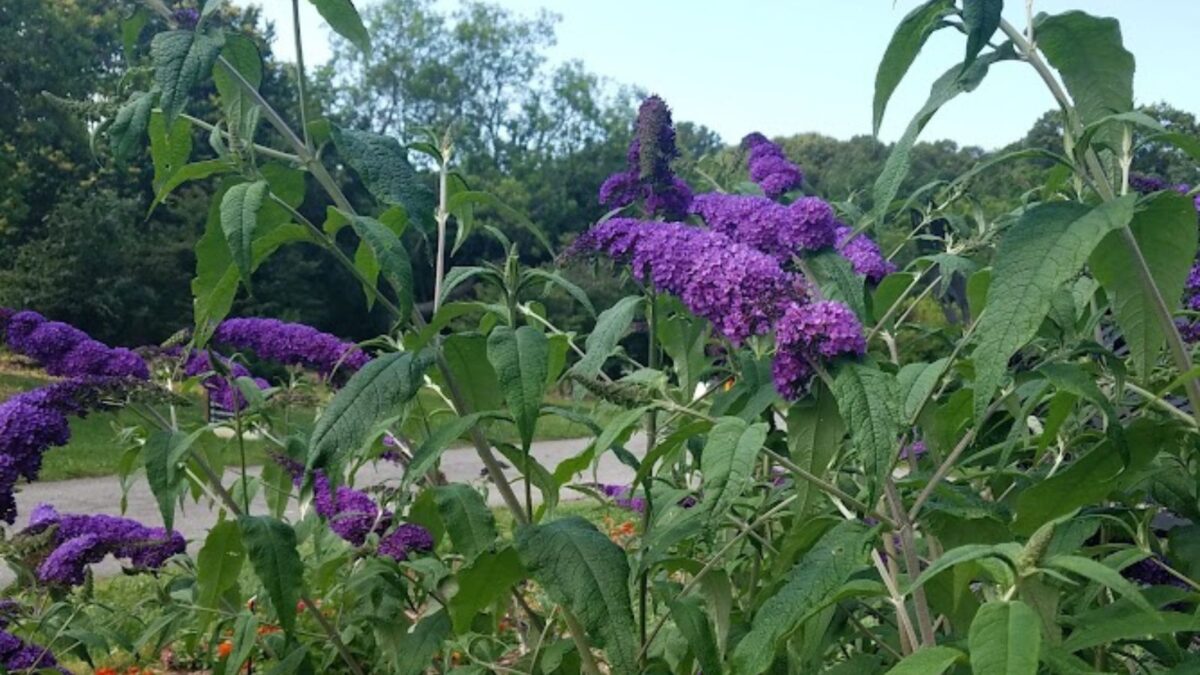
Popular for its showy purple flower clusters that attract butterflies, butterfly bush, unfortunately, is a harmful invasive. This deciduous shrub grows three to 12 feet tall with sprawling, arching branches, long, narrow, opposite leaves with slightly toothed margins, and dense, silvery hairs underneath. The slender, slightly drooping flower clusters bloom in late summer. In addition to the popular purple, white, pink, red, orange, and yellow are also available. The elliptical seed capsules ripen in early fall.
Buttonbush (Cephalanthus occidentalis) is a lovely native shrub with unique globe-shaped white blooms that attract butterflies. And though an herbaceous perennial, purple Joe-Pye weed (Eutrochium purpureum) grows as tall as seven feet with large pink flower clusters.
2. Callery pear (Pyrus calleryana)
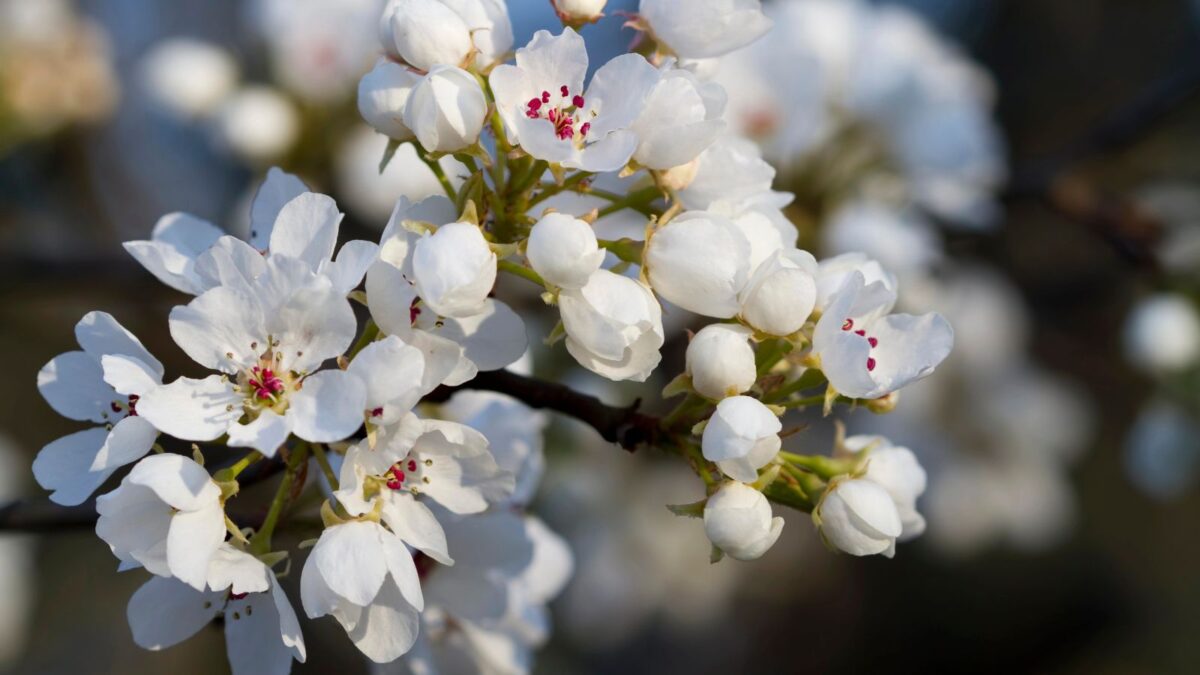
Unfortunately, a common landscaping tree, Callery pear, has a distinctive pyramidal form and often splits in storms. This deciduous tree grows up to 45 feet tall. Its alternate, oval leaves are glossy, dark green, and leathery, with wavy, finely toothed margins. In autumn, they turn red, purple, or orange. Showy clusters of white, five-petaled flowers bloom in early spring before the leaves emerge, and brownish, speckled, berrylike fruits ripen in September or October.
Plant native red chokeberry (Photinia pyrifolia) for spring blooms and fall foliage or swamp white oak (Quercus bicolor) for an extremely adaptable shade tree suitable even for urban environments.
3. Chinese and Japanese wisteria (Wisteria sinensis, W. floribunda)
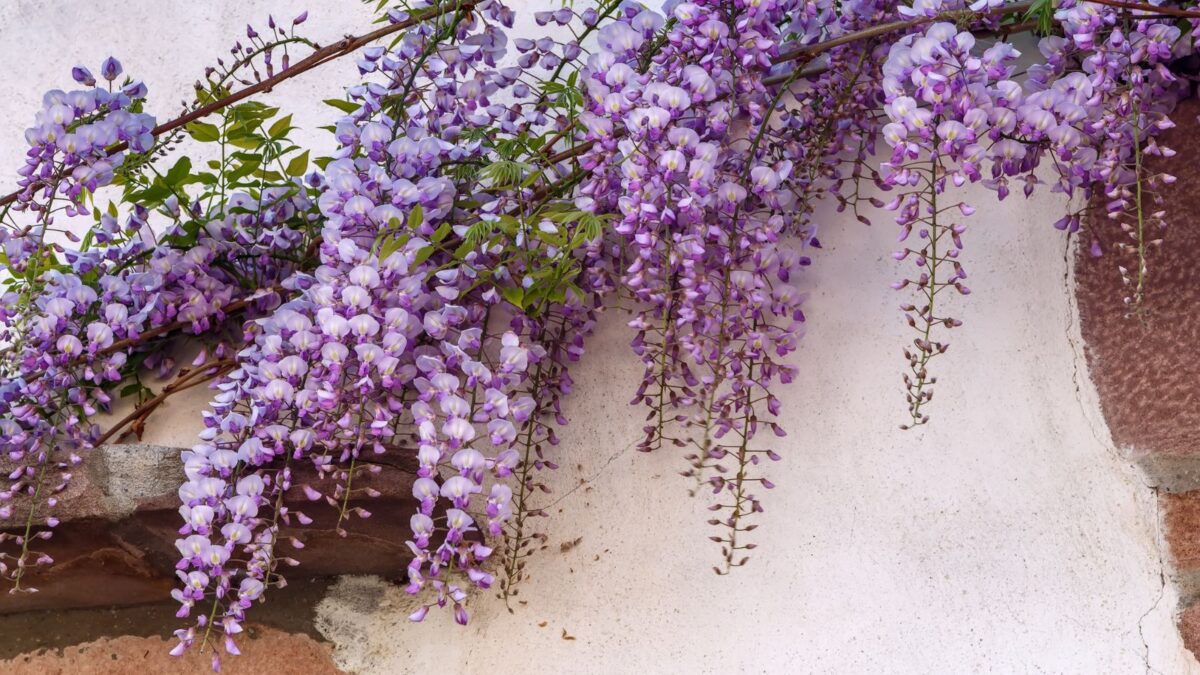
Invasive wisteria vines can reach lengths of up to 65 feet. They have smooth, light gray bark with fluted, muscle-like mature stems and send out numerous runners along the ground that develop a dense root network. Wisteria is best known for its long, hanging clusters of white to purple flowers, which bloom in May if the plant receives sufficient sunlight. The alternate, pinnately compound leaves each have 13 to 19 leaflets. The hairy, green, bean-like seed pods turn brown and crack when mature.
Though American wisteria (W. frutescens) is only native south of Maryland, it has a similar appearance to its non-native counterparts and is not invasive. Alternatively, plant a native vine like virgin’s bower (Clematis virginiana), which produces fragrant, white blooms in late summer.
4. Chinese silvergrass (Miscanthus sinensis)
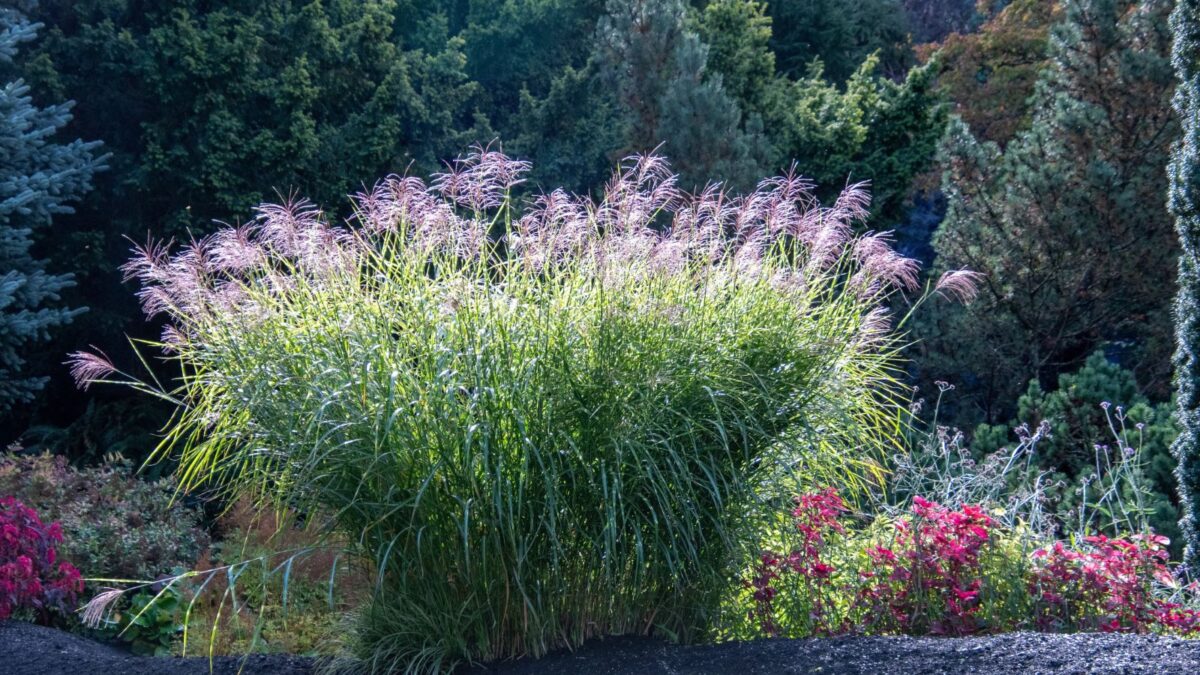
A tall, clump-forming, perennial grass, Chinese silvergrass reaches impressive heights of ten feet. Its long, thin leaves have sharply pointed tips, rough edges, and often a silvery midrib. In early fall, showy panicles emerge in shades of silver to pale pink, with multiple spikes making up each fan-shaped head. More than 50 cultivars of this ornamental grass are available, so its appearance may vary.
Eastern gamagrass (Tripsacum dactyloides) has a similar appearance but with less showy florescence, and big bluestem (Andropogon gerardii) is a lovely native grass with enormous ecological benefits.
5. English ivy (Hedera helix)
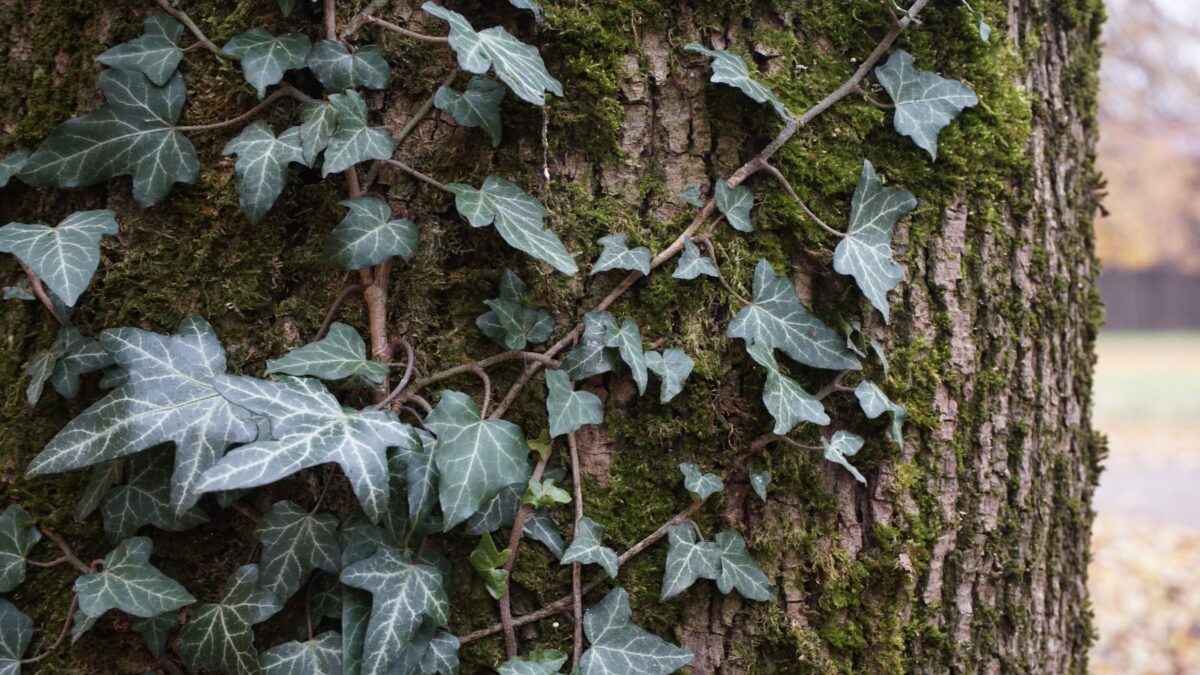
English ivy is a common perennial, evergreen vine that can carpet the ground, smother trees and shrubs, and damage structures. It has waxy, dark green leaves with pale veins and three to five lobes or even a rounded or heart shape if mature and flowering. Only mature plants receiving sunlight bloom, with small, yellow-green flowers in terminal clusters appearing in late summer. Purple to black fruits ripen in fall. Here’s how to remove English ivy if you have it in your yard.
Plant golden ragwort (Packera aurea) for a native evergreen groundcover or Virginia creeper (Parthenocissus quinquefolia) for a native climbing vine.
6. Japanese barberry (Berberis thunbergii)
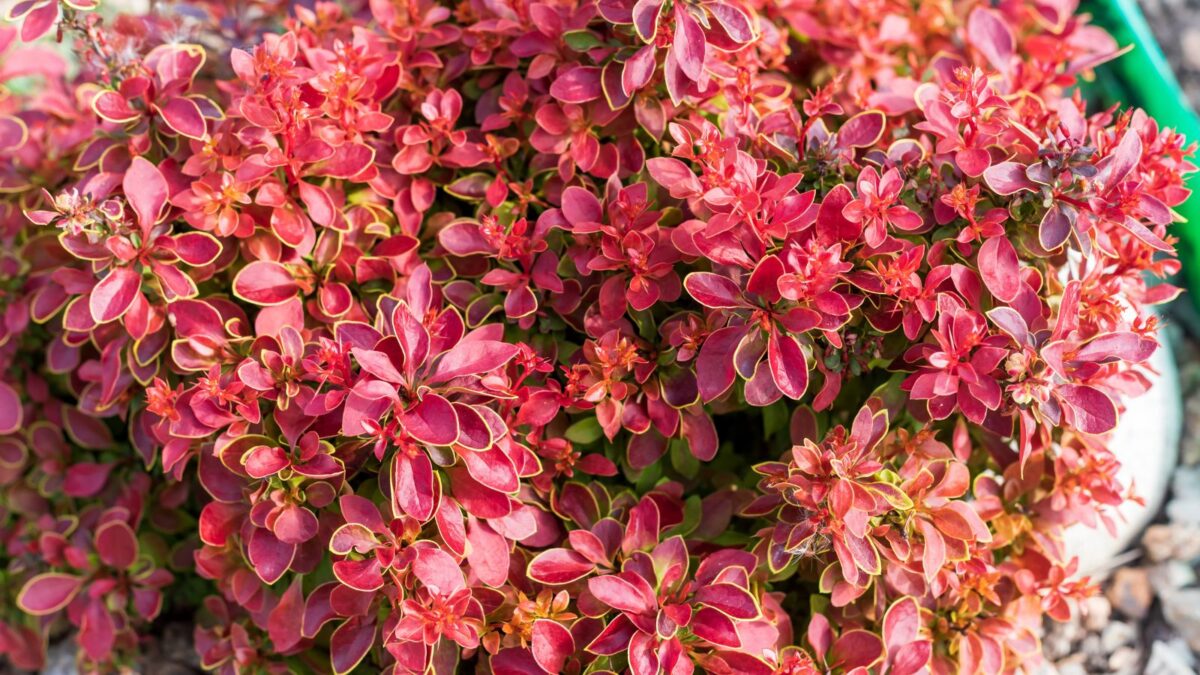
A small deciduous shrub, Japanese barberry grows two to eight feet tall with thin, grooved branches covered in spines. The alternate, tear-drop leaves range from blue-green to dark reddish-purple. In spring, small, pale flowers hang in clusters along the stem and are followed by tiny, oval fruits that mature to red by October and persist into winter. European barberry (B. vulgaris) looks very similar and is also invasive.
Plant American barberry (B. canadensis) or another native shrub, like winterberry holly (Ilex verticillata) instead.
7. Japanese honeysuckle (Lonicera japonica)

Japanese honeysuckle is a semi-evergreen to evergreen woody perennial vine that trails along the ground and climbs by twining, reaching up to 80 feet long. Its green, hairy young stems mature to a brownish shade with peeling bark and a hollow center. The opposite, ovate leaves have smooth margins and may be lobed lower on the vine. In late spring and into summer, the fragrant, white to pink, tubular flowers bloom in pairs in leaf axils. Glossy black berries, also appearing in pairs, mature in autumn.
Native coral honeysuckle (L. sempervirens) makes a nice alternative, as does trumpet vine (Campsis radicans).
8. Linden viburnum (Viburnum dilatatum)

Growing eight to 10 feet tall, linden viburnum is a deciduous shrub or small tree. The opposite, dark green, pubescent leaves have shallowly toothed edges and vary greatly in shape even on the same plant. Look for two to four circular glands at the base of each leaf. Creamy white flowers bloom in flat clusters in late spring, followed by flat-topped clusters of berries in the shape of flattened spheres, which ripen from green to bright red in late summer.
Native viburnums include arrowwood (V. dentatum), which has dark purple fruits and deeply toothed leaves, and blackhaw (V. prunifolium), which has pinkish berries that ripen to bluish-black.
9. Norway maple (Acer platanoides)
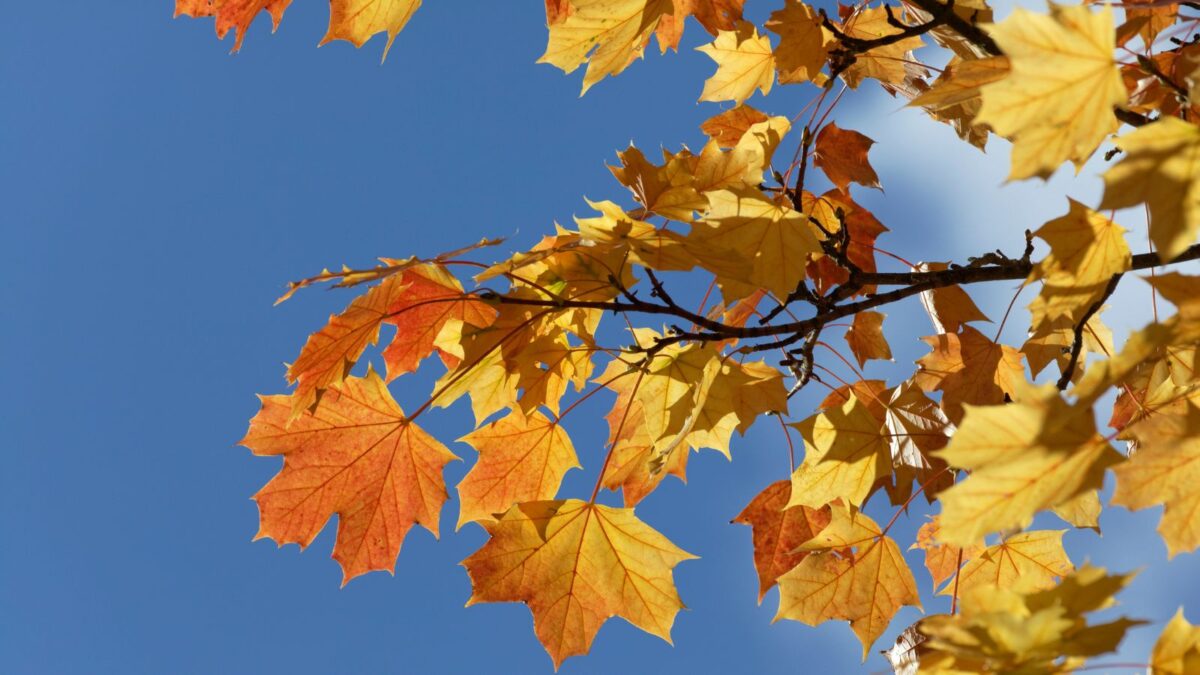
Norway maple is a deciduous tree averaging 40 to 60 feet tall, with palmate leaves. To differentiate it from native sugar maple, break a leaf off at the petiole, or stem, and look for a milky white sap. Sugar maple leaves have a clear sap. Other distinctive features of Norway maples include the winged seeds, which occur in pairs that form almost a 180-degree angle (not U-shaped), and rounded buds (not pointed).
In addition to the sugar maple (A. saccharum), red maple (A. rubrum) is another good native alternative.
10. Porcelainberry (Ampelopsis brevipedunculata)
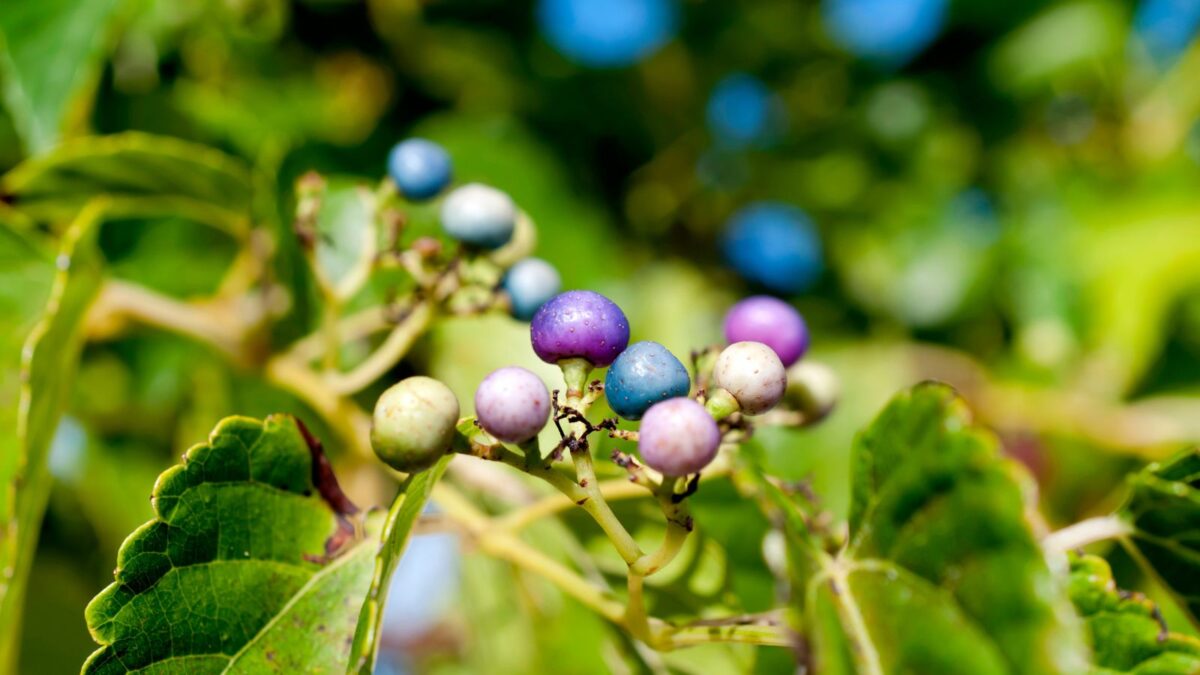
A woody perennial vine, porcelainberry can climb 20 feet or higher using tendrils. This member of the grape family has three- to five-lobed leaves with heart-shaped bases and coarse teeth. Unlike with native grape vines, the bark of porcelainberry has lenticels and does not peel, and mature stems have a white pith. Clusters of greenish-white flowers bloom late spring through summer, followed by speckled berries that ripen to blue.
For a very similar native vine with edible fruit, plant summer grape (Vitis aestivalis). Though also a good alternative, moonseed (Menispermum candense) produces poisonous berries.
11. Purple loosestrife (Lythrum salicaria)
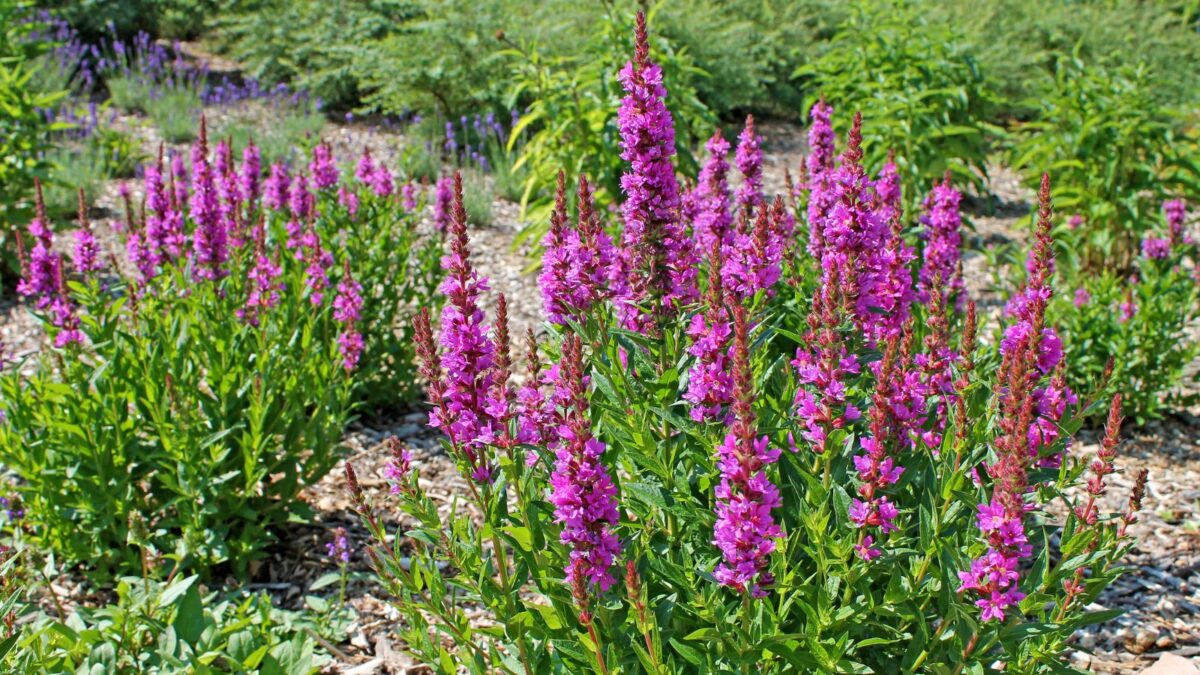
An emergent aquatic perennial, purple loosestrife grows in wetlands and along streambanks and the shores of ponds. Its branched, four-sided stems grow up to eight feet tall and have opposite or whorled lance-shaped leaves with heart-shaped bases. In midsummer, small, magenta flowers bloom in dense spikes.
Tall, pink to purple native wildflowers include swamp milkweed (Asclepias incarnata) and purple giant hyssop (Agastache scrophulariifolia), both of which produce showy flower clusters that attract butterflies and other pollinators.
While this list is by no means comprehensive, it offers an excellent place to start learning about invasive plants in New Jersey and how to help fight them to protect local habitat and native wildlife. Sometimes, positive change happens one plant at a time.
15 Native Plants in New Jersey
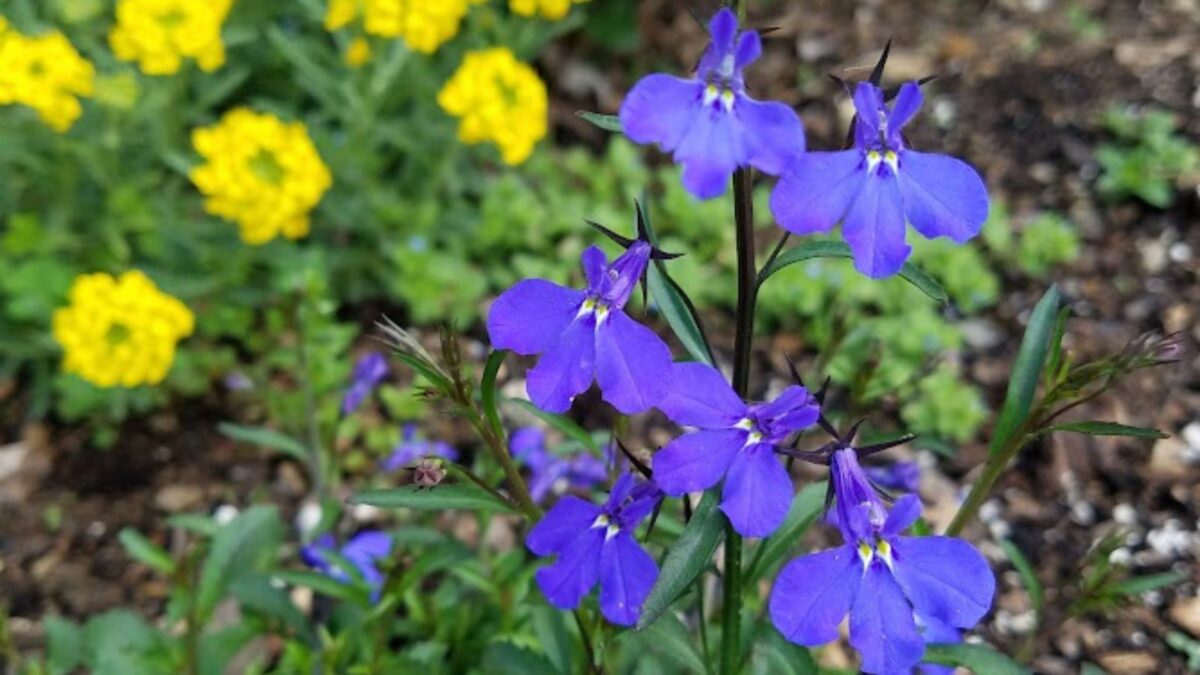
If you have any of the above invasive species in your yard and want replacements, this list of 15 native NJ plants can inspire you. The blue lobelia flowers are stunning, especially if you pair them with white wood anemone or yellow coreopsis flowers.
See pictures and information about these 11 New Jersey native flowers.
Landscaping With Native Flowers
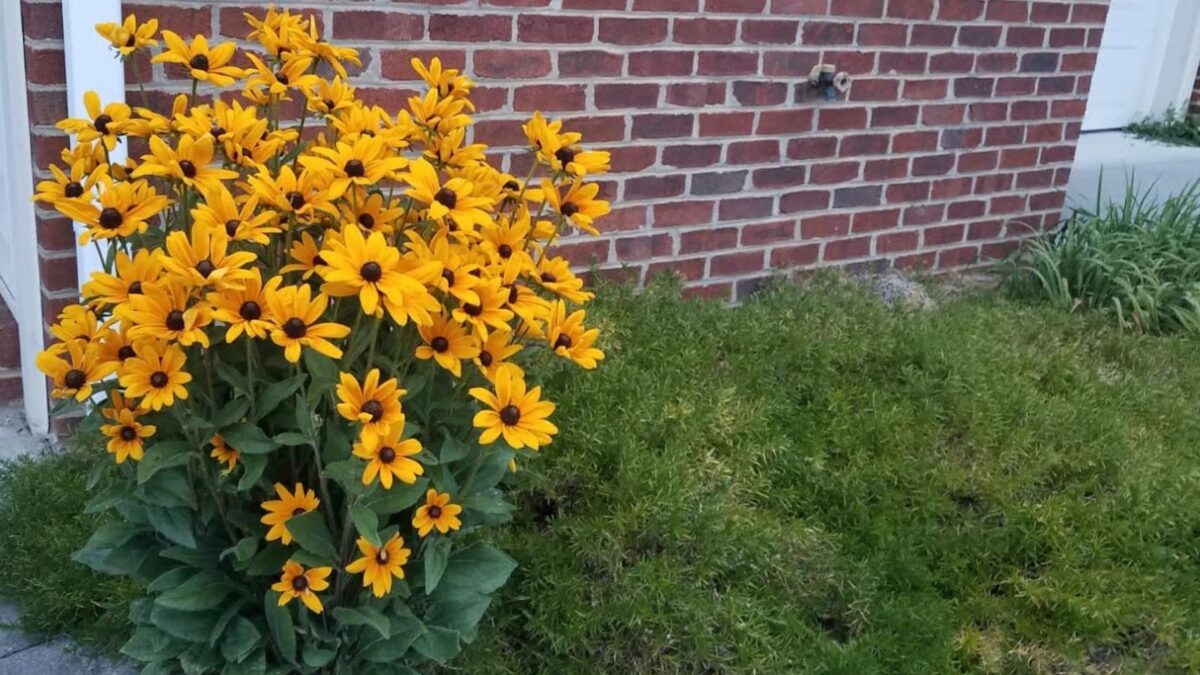
Want to learn more about landscaping with native flowers? See my guide to native plants here.

